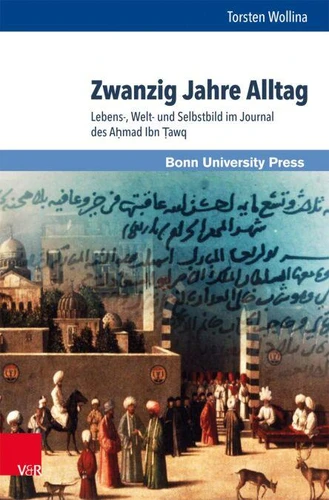Zwanzig Jahre Alltag. Lebens - , Welt - und Selbstbild im Journal des Aḥmad Ibn Ṭawq
Par : ,Formats :
Disponible dans votre compte client Decitre ou Furet du Nord dès validation de votre commande. Le format PDF est :
- Compatible avec une lecture sur My Vivlio (smartphone, tablette, ordinateur)
- Compatible avec une lecture sur liseuses Vivlio
- Pour les liseuses autres que Vivlio, vous devez utiliser le logiciel Adobe Digital Edition. Non compatible avec la lecture sur les liseuses Kindle, Remarkable et Sony
 , qui est-ce ?
, qui est-ce ?Notre partenaire de plateforme de lecture numérique où vous retrouverez l'ensemble de vos ebooks gratuitement
Pour en savoir plus sur nos ebooks, consultez notre aide en ligne ici
- Nombre de pages231
- FormatPDF
- ISBN978-3-8470-0294-9
- EAN9783847002949
- Date de parution16/07/2014
- Protection num.pas de protection
- Taille1 Mo
- Infos supplémentairespdf
- ÉditeurV&R Unipress
Résumé
A?mad Ibn ?awq's Ta?l?q (d. 1510) is one of only a few examples that survived from an indigenous arabic diary tradition which lasted about a thousand years. It is also by far the most extensive one, its edition amounting to almost 2, 000 pages covering twenty years. Despite considerable scholarly attention in recent years, this is the first monograph dedicated to the Ta?l?q, not as a source but as the subject of inquiry.
To these ends, Torsten Wollina discusses it as an ego-document shedding new light on the interdependence of text form and presented information. The first of four chapters frames the study by placing the Ta?l?q within the arabic diary tradition, which conformed both to the needs of historians (as primary sources) and to those of each author (as a pragmatic text for everyday use). Chapters 2 and 3 give attention to Ibn ?awq's worldview, treating his household and his social contacts in the wider world, respectively.
The final chapter addresses the author's self image and the concepts of self available in his times.
To these ends, Torsten Wollina discusses it as an ego-document shedding new light on the interdependence of text form and presented information. The first of four chapters frames the study by placing the Ta?l?q within the arabic diary tradition, which conformed both to the needs of historians (as primary sources) and to those of each author (as a pragmatic text for everyday use). Chapters 2 and 3 give attention to Ibn ?awq's worldview, treating his household and his social contacts in the wider world, respectively.
The final chapter addresses the author's self image and the concepts of self available in his times.
A?mad Ibn ?awq's Ta?l?q (d. 1510) is one of only a few examples that survived from an indigenous arabic diary tradition which lasted about a thousand years. It is also by far the most extensive one, its edition amounting to almost 2, 000 pages covering twenty years. Despite considerable scholarly attention in recent years, this is the first monograph dedicated to the Ta?l?q, not as a source but as the subject of inquiry.
To these ends, Torsten Wollina discusses it as an ego-document shedding new light on the interdependence of text form and presented information. The first of four chapters frames the study by placing the Ta?l?q within the arabic diary tradition, which conformed both to the needs of historians (as primary sources) and to those of each author (as a pragmatic text for everyday use). Chapters 2 and 3 give attention to Ibn ?awq's worldview, treating his household and his social contacts in the wider world, respectively.
The final chapter addresses the author's self image and the concepts of self available in his times.
To these ends, Torsten Wollina discusses it as an ego-document shedding new light on the interdependence of text form and presented information. The first of four chapters frames the study by placing the Ta?l?q within the arabic diary tradition, which conformed both to the needs of historians (as primary sources) and to those of each author (as a pragmatic text for everyday use). Chapters 2 and 3 give attention to Ibn ?awq's worldview, treating his household and his social contacts in the wider world, respectively.
The final chapter addresses the author's self image and the concepts of self available in his times.



